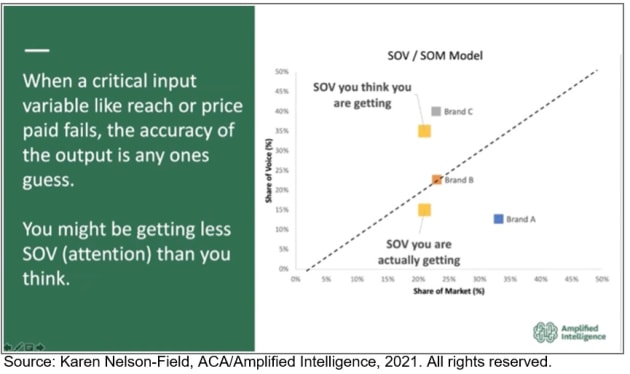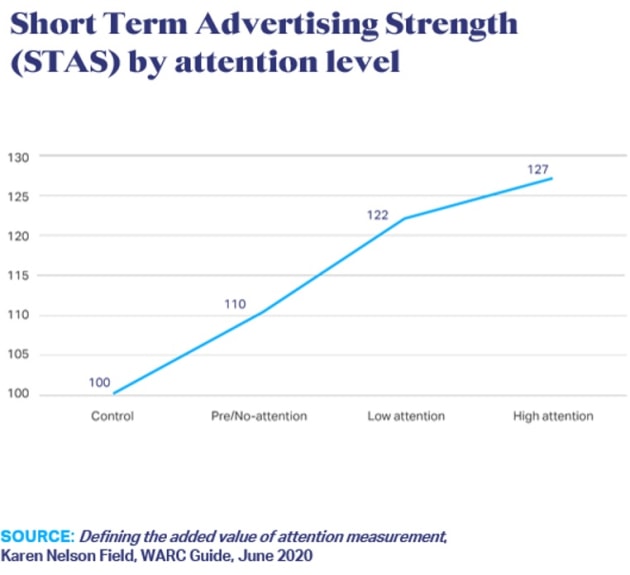Clarkson, Mississippi is home to the crossroads that sparked the myth of, ‘Devil at the Crossroads’ – the legend of the Blues player, Robert Johnson, who transformed into an accomplished guitarist so suddenly, he was said he had sold his soul to the devil in return for mastering his craft.
Mythology aside, Johnson’s real-life transformation came from deepening his discipline under Ike Zimmerman – the greatest guitar player in the Southern States. Mixing elements of Blues and faster tempos closer to Swing, Johnson’s musical progress went on to inspire Muddy Waters, modern blues and from that, a little ole thing called Rock n’ Roll.
Johnson’s story offers a powerful metaphor for advertising in that we too are at a crossroads. In our context, this is around a growing dysfunction in the media ecosystem that is making it hard to understand how ‘viewability’ equates to actual attention paid. Like Johnson, advertising need to embrace inspiration at the juncture of different disciplines to effect our own transformation and define advertising’s true value potential Vs. possible perdition.
The road to perdition
At the intersection of creative and media analysis, we have angels on our shoulders like Professor Karen Nelson-Field, CEO of Amplified Intelligence – a world-renowned consultancy in measuring attention. In a recent presentation for the ACA, and her definitive book on the subject, ‘The Attention Economy and How Media Works’, Nelson-Field outlines the simple truths that speak to the challenge around in media metrics.
Nelson-Field says that while ad planning that fosters attention tends to have a positive impact on mental availability – a brand being brought to mind in most buying occasions – and therefore business effects, there is zero impact if there is no one there to see an ad.
We can all accept that not all OTS are born equal and proxies like ‘viewability’ or CPMs, do not account for the vast performance differences seen between media platforms. The elephant in the Zoom, however, is that we still have not evolved a universal quantification of the quality of attention being paid, and as a result, do not really know the true value of the share of voice an advertiser is getting.
The ACA’s ‘To ESOV and beyond’ report, built on the significance of the ‘viewability to attention gap’, suggesting it is worsening as a result of the walled gardens of major digital platforms – who of course, would have us believe all is rosy in their reporting.
As per the chart below, it is vital that we better quantify share of attention. If the share of attention is good and a brand’s share of voice is in excess of its share of market, then the brand should be geared for growth. However, Nelson-Field suggests that if Brand B (below) is investing in a topline ‘share of voice’ spend that looks commensurate with the competition and believes it is geared for growth, it may actually be set for decline as their true share of voice and media weight is actually lower due to low quality attention.

The crossroads of growth
There is an imperative to rebalance ‘reach at any cost’ mindsets with a new way to quantify the quality of our share of attention. If the soul of what we do is to elevate positive business impacts for clients, then we must redefine the value of ‘viewability’.
Amplified Intelligence has done great work here – with measurement tools collecting human attention data in real-time – up to 5 frames per second – across different channels, and devices. They have demonstrated stronger sales impact that correlates with active versus passive attention – whether a person looks at the ad, or the device. When active attention is paid to an ad, mental availability is most positive and supports larger, longer-term business effects. When more passive attention is paid, the effect is less marked but still significant. Tellingly, when an ad is not effectively viewable, mental availability gains are zero.
Adding a human data layer to lean into share of attention gives advertising an opportunity to truly quantify share of voice weight. A new qCPM score has been mooted – where ‘q’ stands for quality – and this proposes the common-sense inclusions on a new measure of quality to focus on efficacy over a load of eyeballs. Ultimately, the logic being that the more valuable the audience impression, the more advertisers will value the media buy.
qCPM inclusions are suggested are as follows:
- % of pixels on screen / # of seconds in view
- % screen coverage
- % ad clutter
- % sound on
- % likely human impressions (ad fraud estimation count)
- % account / viewer duplication
The path to progress
Naturally, there is a marketplace economic balance to be struck between efficiency and efficacy in our choices, but ultimately gearing around optimising the value and values we offer clients has to be good progress. Indeed, the findings on quality of attention, offer wider insight than the evolution of media measurement, they clarify the opportunity for advertising as a whole.
In ‘The Attention Economy’, Nelson-Field describes how attention for advertising is, in the main, incidental not primary – driven by ‘bottom-up’ attention where we elevate audiences from passive attention to low attention states. What is genuinely surprising, (see below), is the relative index value that ‘low attention’ exposure to advertising has on sales impact. It is only 5 index points below hard-won high attention – this is typically more associated with directed, or ‘top down’ attention – based on intentional seeking.

Attention therefore is an invaluable frame that evolves our misconception that advertising commands attention and converts through persuasion. The reality we face is that we build incrementally on distinctive brand associations in a particular context. This is how we win in memory, build mental availability and in turn elevate and compound positive business effects.
The intersection of Nelson-Field’s expertise in attention offers invaluable learnings for agencies like Lionize and marketers looking to create ads and plan media mixes to foster share attention to build valuable share of voice and growth. In addition to scale use of attention tools, applying key principles can benefit campaigns and budgets of all sizes:
- Creative that triggers high arousal from passive to low and high attention states is valuable and ‘unexpectedness’ impacts this as we are attuned to novelty in our environment
- Techniques that create novelty such as breaking the conventions of a specific medium,
or use of audio and imagery together can increase attention levels
- Creative plays a role but it can be significantly elevated by making the right media mix choices – share of video in the mix especially can elevate efficacy
- Longer ads don’t tend to particularly benefit attention – it’s more a function of the attention quality of the platform and the amount of active attention paid
- As close as possible to 100% pixels on screen, a greater % of screen coverage without distraction and the strong attribution of an ad to a brand, all foster attention and impact
In the final analysis, adjusting for attention realities offers gains for advertising effectiveness that go way beyond measurement. It’s about how we raise our game to avoid selling out to low attention, low value reach. As Ogilvy said, as an output ‘we sell or else’. If the soul of advertising is about elevating business outcomes for our client partners, then we need to layer human attention into planning to give a true value to views and get a real sense of creative and media weight. Just like Robert Johnson, we find ourselves at the crossroads, if we are to truly master our craft, the devil is in the detail.
Source: adnews.com.au

